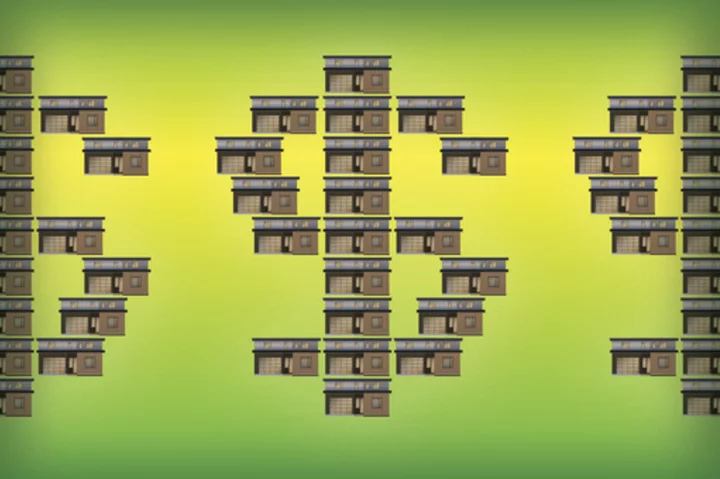LOS ANGELES (AP) — Most traditional homebuilders in America follow a construction process that's hardly changed in decades, and which typically takes about four to six months, if not longer, to deliver a completed single-family home.
Modular homebuilders fabricate walls, roofing and other segments of a home in a factory and then deliver the finished sections to the homesite for assembly in a process that takes just a few weeks to complete.
Veev, a modular homebuilder based in Hayward, California, has built more than 170 townhomes, single-family houses, condos and other types of dwellings around the Bay Area and has set its sights on building 300 more single-family houses in Northern California by the end of 2025.
CEO Amit Haller, who co-founded Veev in 2008, recently spoke to The Associated Press about how more modular home construction could help tackle the nation’s chronic shortage of new homes. The interview has been edited for length and clarity.
Q: What are some of the major differences in how Veev builds a home versus a traditional homebuilder?A: The traditional way is a very sequential process. There’s the excavation. And then there’s the concrete. Then you need to wait for three weeks until the concrete will be fully load-bearing. And then there’s the framers. And after the framers there’s the electricians and the plumber, etc. So, it’s a very, very sequential process. Now, say that you take this entire process and squeeze it into one linear production line doing a wall. It becomes very similar to a production line of a car, but in this production when we are doing it wall by wall, and with our unique plug-and-play method, those walls are clicked one to another in the field, very quickly, very efficiently.
Q: How many workers does it take to build a Veev fabricated home?A: It’s a mix of workers, who are uniquely certified on the build system. And obviously, we have machines and robots from time to time. Still, it’s not zero human touch. There’s stuff that a human is always going to do better than a robot and some stuff is going to be much safer to give it to the robot. It’s always going to be a blended human and machine environment.
Q: Once you deliver all the components for assembly on site, how many workers do you need to finish the job?A: It’s a team of five people that will assemble the home in four weeks, from foundation to finishing.
Q: So it’s fair to say you’re insulated from a lot of the labor shortage challenges many homebuilders have complained about for years?A: It’s the labor shortage and the labor experience. Because the shortage is also generating the fact that there’s less and less experience within the labor.
It takes many years to become a good framer, or painter or roofer, or obviously, plumbers or electricians. So what we see actually is the fact that not only homes are becoming more expensive, the quality actually decreases. The home that you buy today from a builder is exactly the same home they did 50 years ago. Maybe better appliances, but that’s pretty much it.
Q: Your business model saves on labor and other costs, but you still face the same challenges and delays traditional builders do in finding ready to build land, correct?A: The cost of at home is made with several elements, land is about 25% of it. But about 50% of the cost of the homes is literally the construction. So, no, we are not solving for the land, but what we are solving for is to tackle probably the most expensive component in this process and the time that it takes. So, it could take you like two years to entitle land, sometimes even three or four years, but then it might take you another year to build it. We can build it in a month.
Q: New home construction slowed sharply for many years after the late 2000s housing crash. Do you expect more builders like Lennar will adopt the prefabrication approach to more quickly build homes?A: Absolutely, because the consistent erosion of the current industry is very visible and very clear in the past 10 years. Veev is not the only solution. And I think there’s going to be a handful, if not a dozen different options. And the good news is there’s room for everyone, including the traditional industry, because the shortage is so serious and so real that it’s not going to be a one-company fix.

